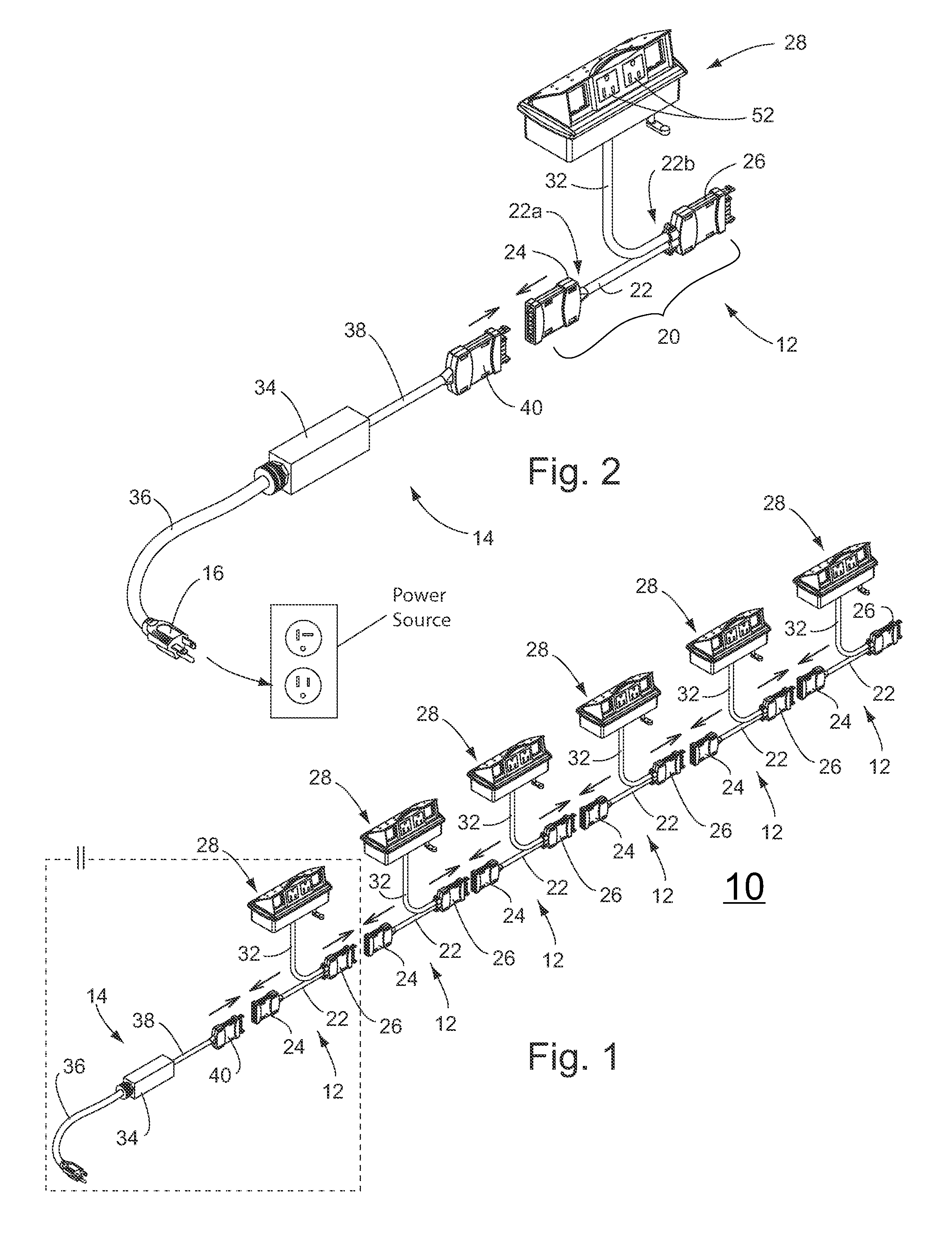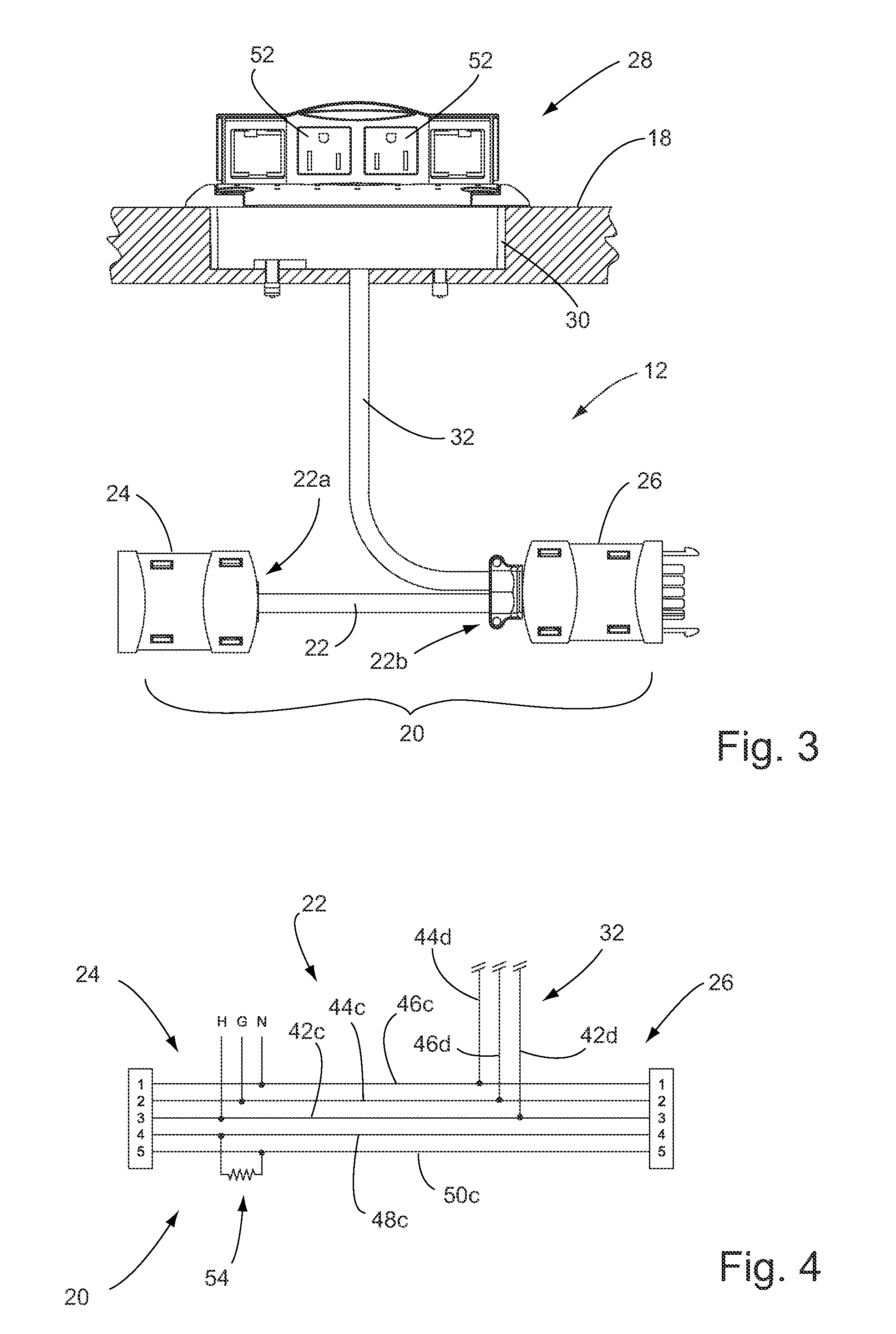Electrical system with circuit limiter
a technology of circuit limiter and electrical system, which is applied in the direction of constant-current supply dc circuit, coupling device connection, manufacturing tools, etc., can solve the problems of increasing the difficulty of wire management, increasing the difficulty of supplying electrical power, and reducing the electrical resistance across the signal conductor. , the effect of increasing the electrical resistance across the signal conductor
- Summary
- Abstract
- Description
- Claims
- Application Information
AI Technical Summary
Benefits of technology
Problems solved by technology
Method used
Image
Examples
Embodiment Construction
[0032]Referring now to the drawings and the illustrative embodiments depicted therein, an electrical power distribution system 10 includes a plurality of generally Y-shaped power cable assemblies 12 that are electrically connectable together in series, and which receive electrical power via a control unit 14 and direct this power to respective branch cables and a power outlets (FIGS. 1 and 2). Control unit 14 receives electrical power through a plug 16 that is connectable to a wall outlet or other electrical power source (FIG. 2), and is operable to selectively conduct the electrical power to the power cable assemblies 19 depending on the number of power cable assemblies that are coupled together in the electrical power distribution system 10, as will be described in greater detail below. In this way, each power cable assembly 12 can be substantially identical to the other power cable assemblies, and the system 10 can de-energize (or not energize) the power cable assemblies 12 in th...
PUM
| Property | Measurement | Unit |
|---|---|---|
| voltage | aaaaa | aaaaa |
| voltage | aaaaa | aaaaa |
| voltage | aaaaa | aaaaa |
Abstract
Description
Claims
Application Information
 Login to View More
Login to View More - R&D
- Intellectual Property
- Life Sciences
- Materials
- Tech Scout
- Unparalleled Data Quality
- Higher Quality Content
- 60% Fewer Hallucinations
Browse by: Latest US Patents, China's latest patents, Technical Efficacy Thesaurus, Application Domain, Technology Topic, Popular Technical Reports.
© 2025 PatSnap. All rights reserved.Legal|Privacy policy|Modern Slavery Act Transparency Statement|Sitemap|About US| Contact US: help@patsnap.com



